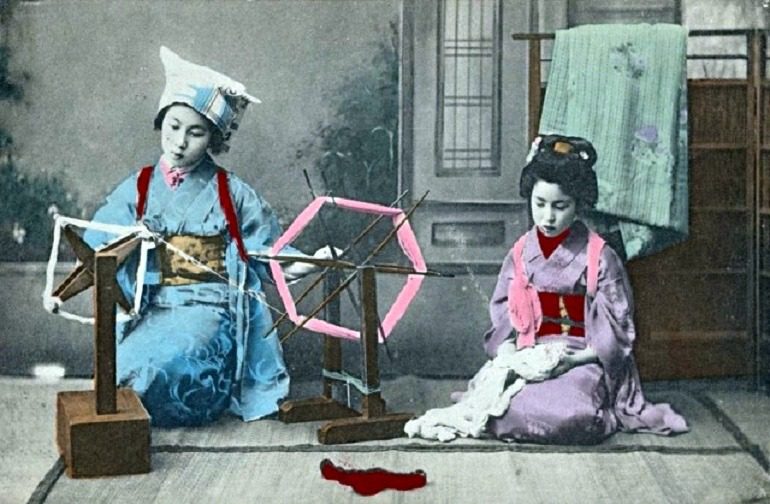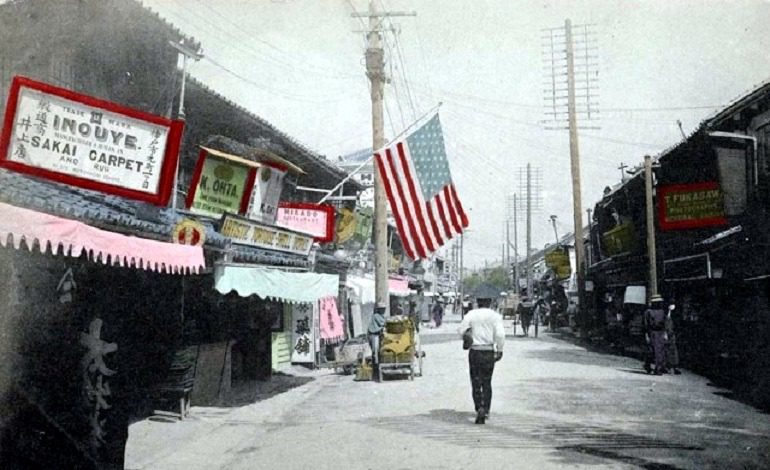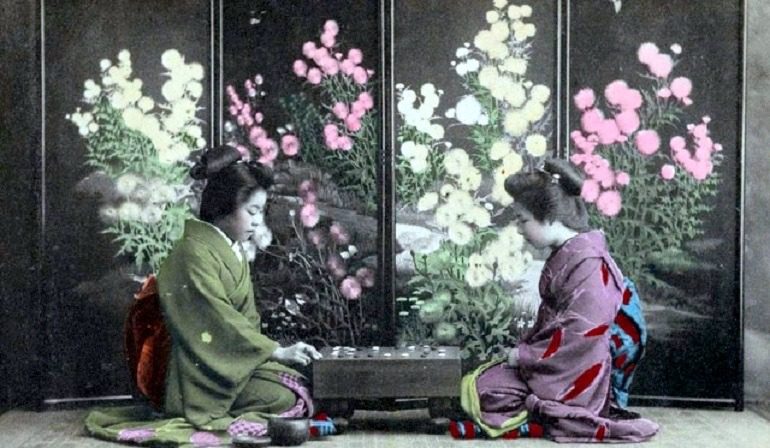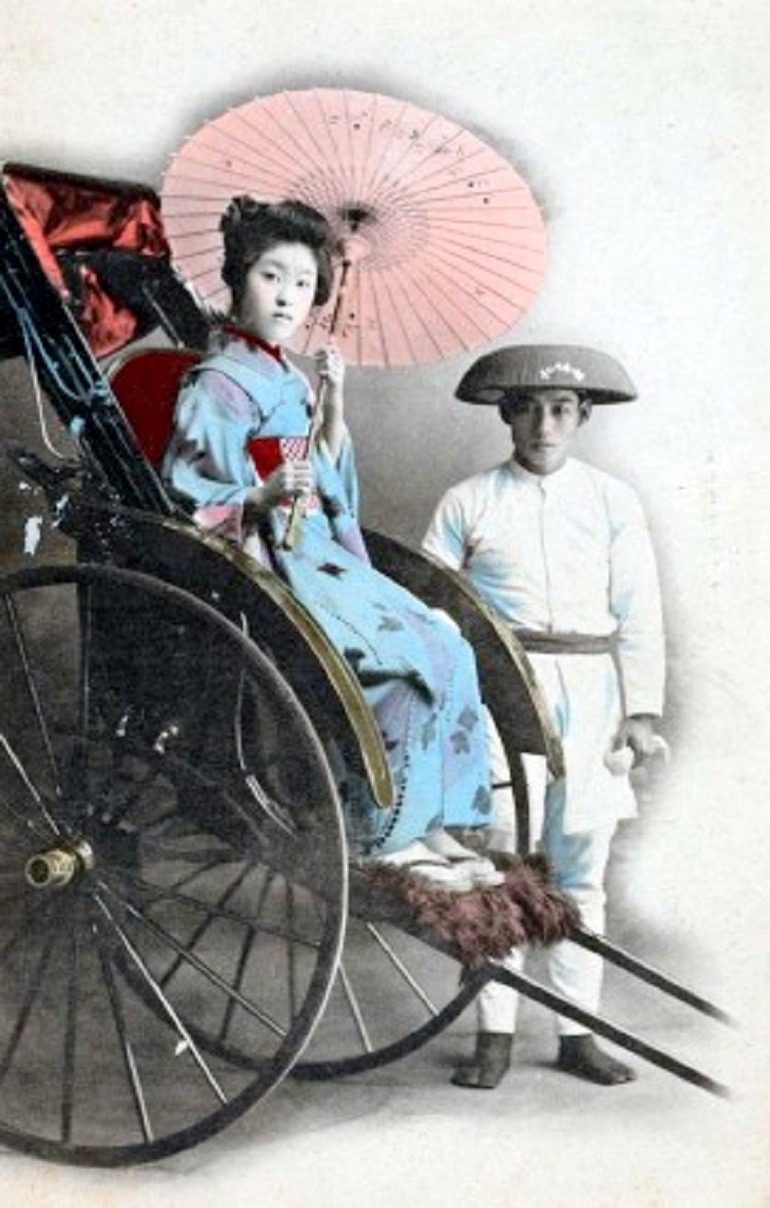ART NEWS
Beautiful images capture Japanese culture. Japanese Boys in (Kodomo) Country 1913, one of the images from the New York Public Library collection. Image courtesy of Ueda/New York Public Library
ART & DESIGN: Early 20th-century colorized images capture Japanese culture in unique ways. This collection of photographs from the New York Public Library reveals the history of a changing Japan.
BY KAZEEM ADELEKE
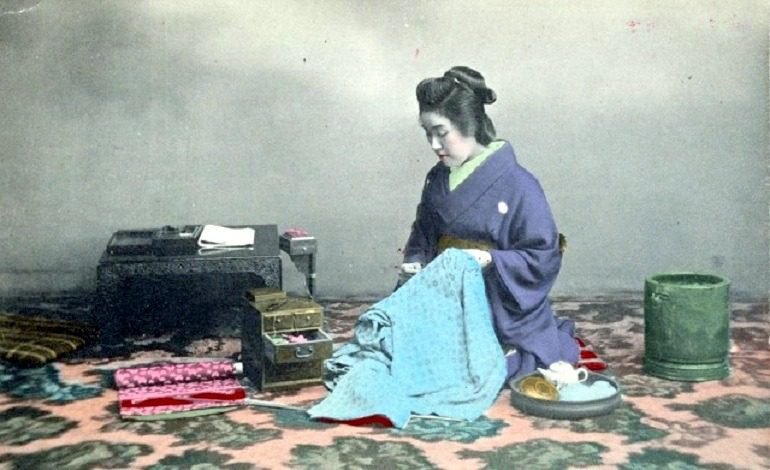
NEW YORK, NY–The New York Public Library did something absolutely fascinating earlier this month when it released a cache of 180,000 digitized public domain images from its collection. The images were previously available only at its New York City locations. Since its release, many art historians and photography enthusiasts have been excavating this archive treasure trove. The result is an amazing collection of historical images.
As expected, the New York Public Library collection is full of intriguing surprises. In the collection are photographs from Japan that tell the stories of modernization, economic growth, tourism, and the impact of Western influences on Japanese society starting in the 20th century.
The 20th century marked the beginning of large-scale industrialization in Japan. The development, which began during the Meiji Restoration, a period of unprecedented modernization that lasted from 1868 to1912, ensured the continued growth of Japan as an industrialized society. The Taishō period (1912–1926) that followed saw the rise of Japan to international power, even as political reforms and continuing Westernization drastically altered the face of Japanese society.
At the height of industrialization and development, Japan became a major hub for Westerners and other foreign visitors. The increase in the number of foreign guests to Japan opened up a new market for Western publishers, who produced images and postcards for tourists and guests that throng this growing Asian nation.
Some of the postcards and images produced by Western publishers catching in on Japan’s economic growth are part of the cache of 180,000 digitized public domain images released by the New York Public Library in January. The postcard and images were artificially colorized from black and white photos through photochrom. Some were colorized through the hand painting process.
Traditional and Cultural Lives of the Japanese
The images and postcards capture the traditional and cultural lives of the Japanese. Many of the images capture typical scenes of rural laborers, mostly women, engaged in daily chores; large crowds on city streets, and young children having fun. One of the postcard images captures five excited Japanese boys. Titled Japanese Boys in (Kodomo) Country, the boys, who are dressed in their traditional Japanese attire, appear happy from the illuminating smiles on their faces.
The image of Girls Playing Uta-Garuta allows an insight into how girls occupy themselves during leisure time. This was evidently long before the advent of video games. The focus and the keenness of girls show how important this game is to them. Their attentiveness is echoed in another image titled Ohanasan Playing ‘Go’ Game. In the photo, two women sit in front of a flowered screen focusing attentively on outwitting each other.
The New York Public Library collection has a direct focus on the contributions of women to the Japanese economy. Some of the images show women engaged in commercial activities, including selling their wares at the market, weaving baskets, and sewing dresses. Sewing, for example, shows a Japanese woman sewing a blue dress. The delicate touch of purple and blue brings serenity to this captivating image.
Maiko at the Spinning Wheel
Maiko at the Spinning Wheel reveals a traditional way of creating thread or yarn from natural or synthetic fibers for Japanese traditional attire. Dressed in their traditional dresses, the young women spin the threads with absolute devotion. The devotion of the women to their craft illuminates the history of the Maiko tradition. Beyond the spinning wheel, Maiko’s young women were great entertainers, dexterous dancers, and instrumentalists. During feasts, they exuded great brilliance and won admiration for their songs, dances, and instrumentation. Dressed in their traditional attire, they captivated guests and fans at feasts by playing the shamisen and koto, traditional Japanese instruments.
While many of the postcards and images reflect Japanese culture and traditional history, some reveal Western influences. One of the images, titled Motomachi-dori Itchome, Kobe, includes an American flag. The landscape photography shows a street full of local grocery stores.
There is so much history in the colorized images and postcards of Japanese culture in the New York Public Library collection. Beyond revealing Japanese culture and tradition as it went through Western influences that permanently altered the face of Japanese society, the postcards are beautiful in their own way. Although the context of production and the actual year of production is unclear, what is evident is that each image is worth more than a thousand words.
Colorized Images Capture Japanese Culture
